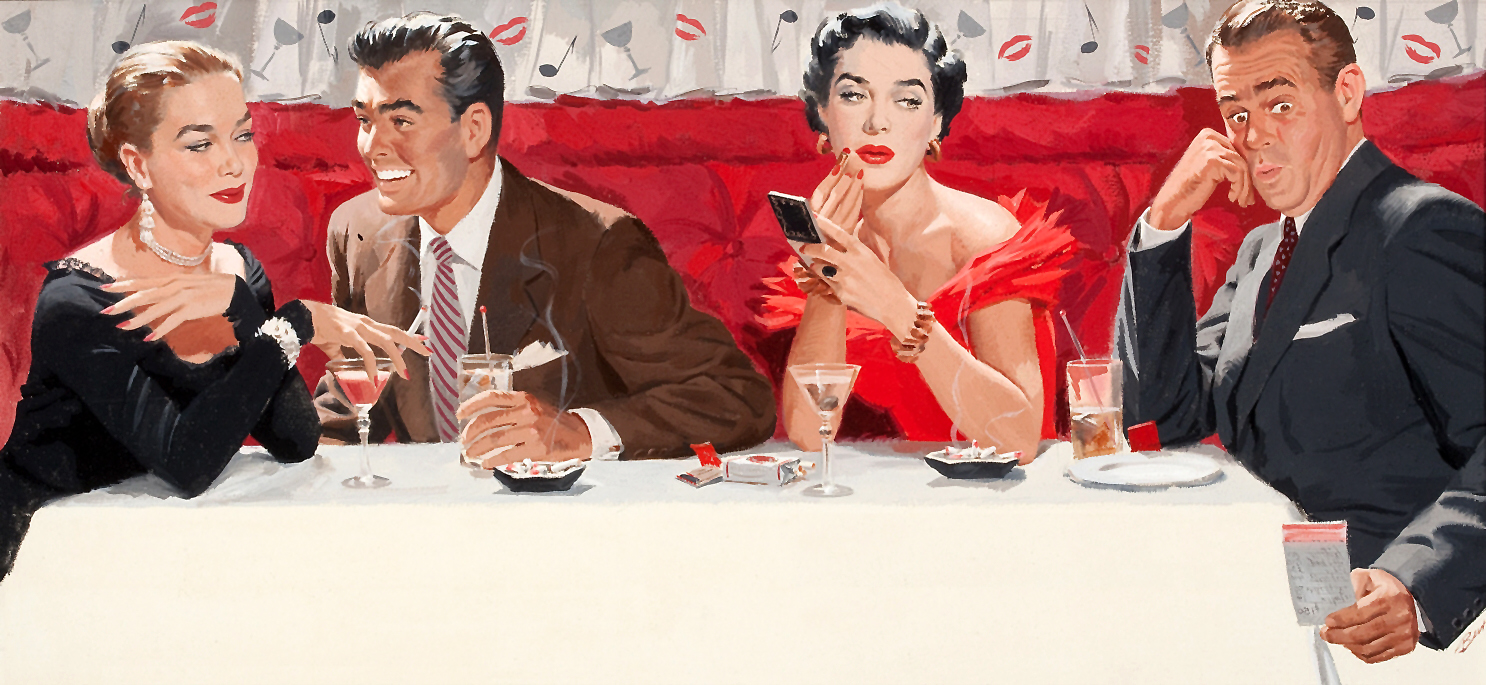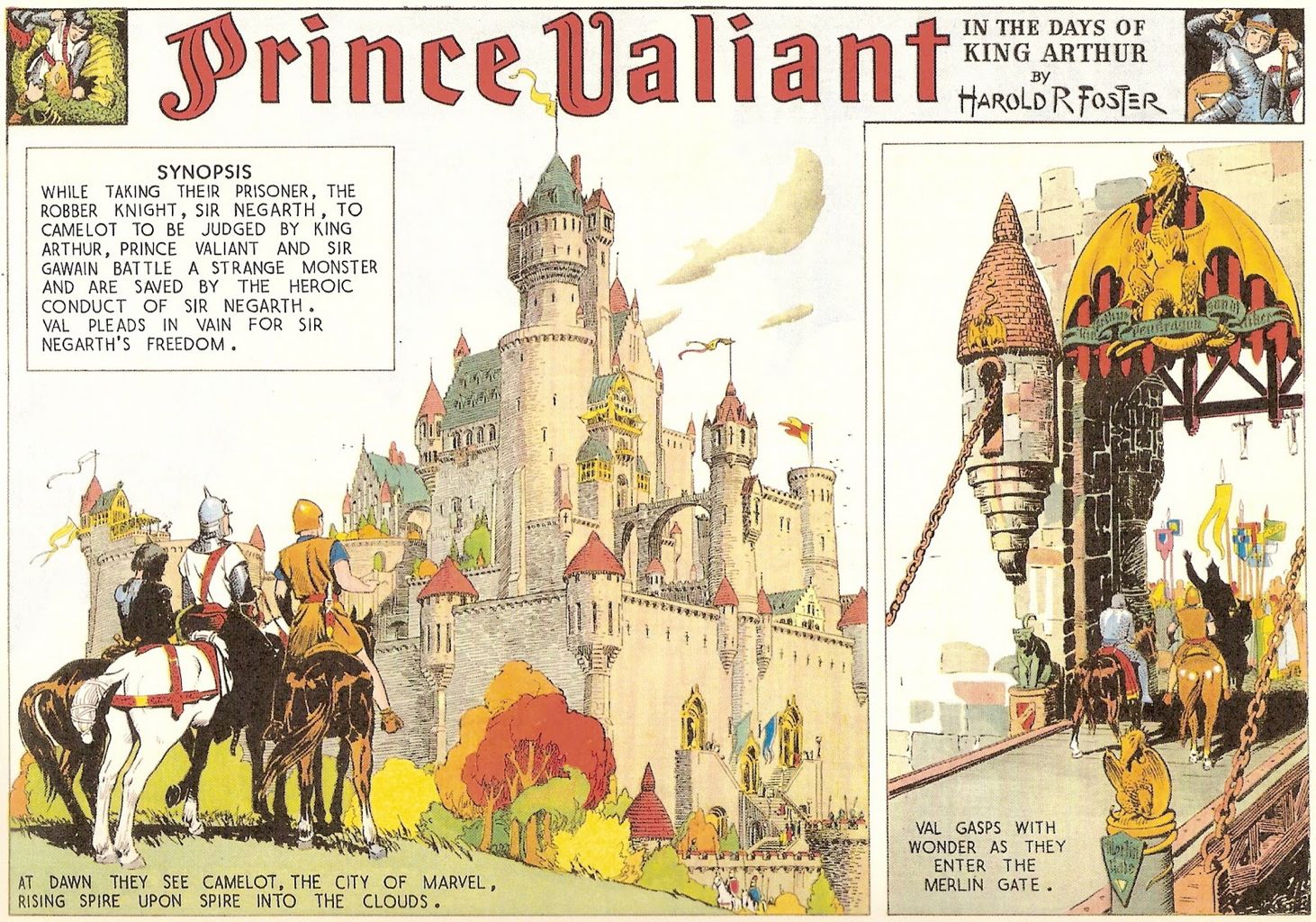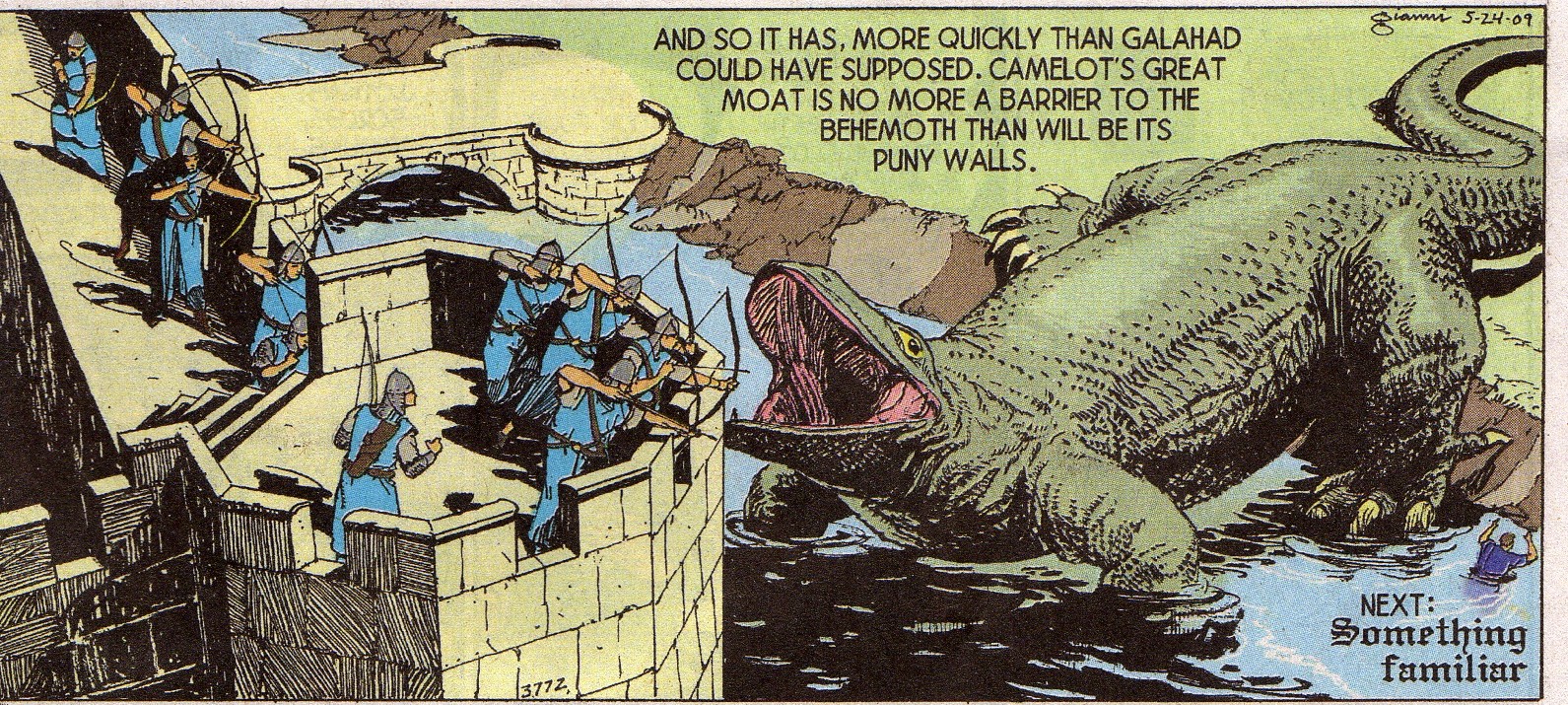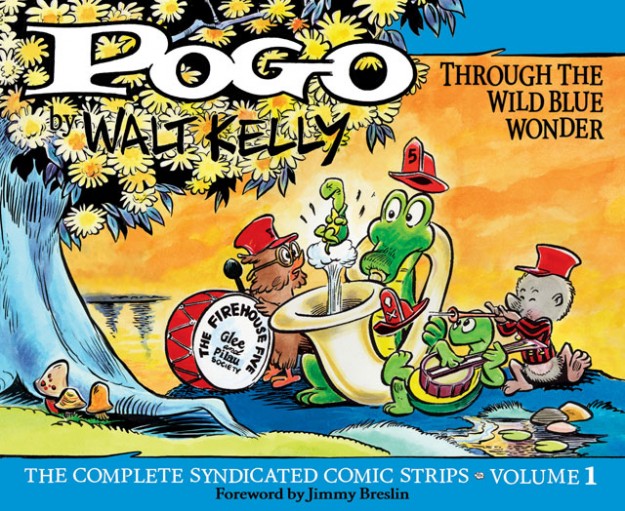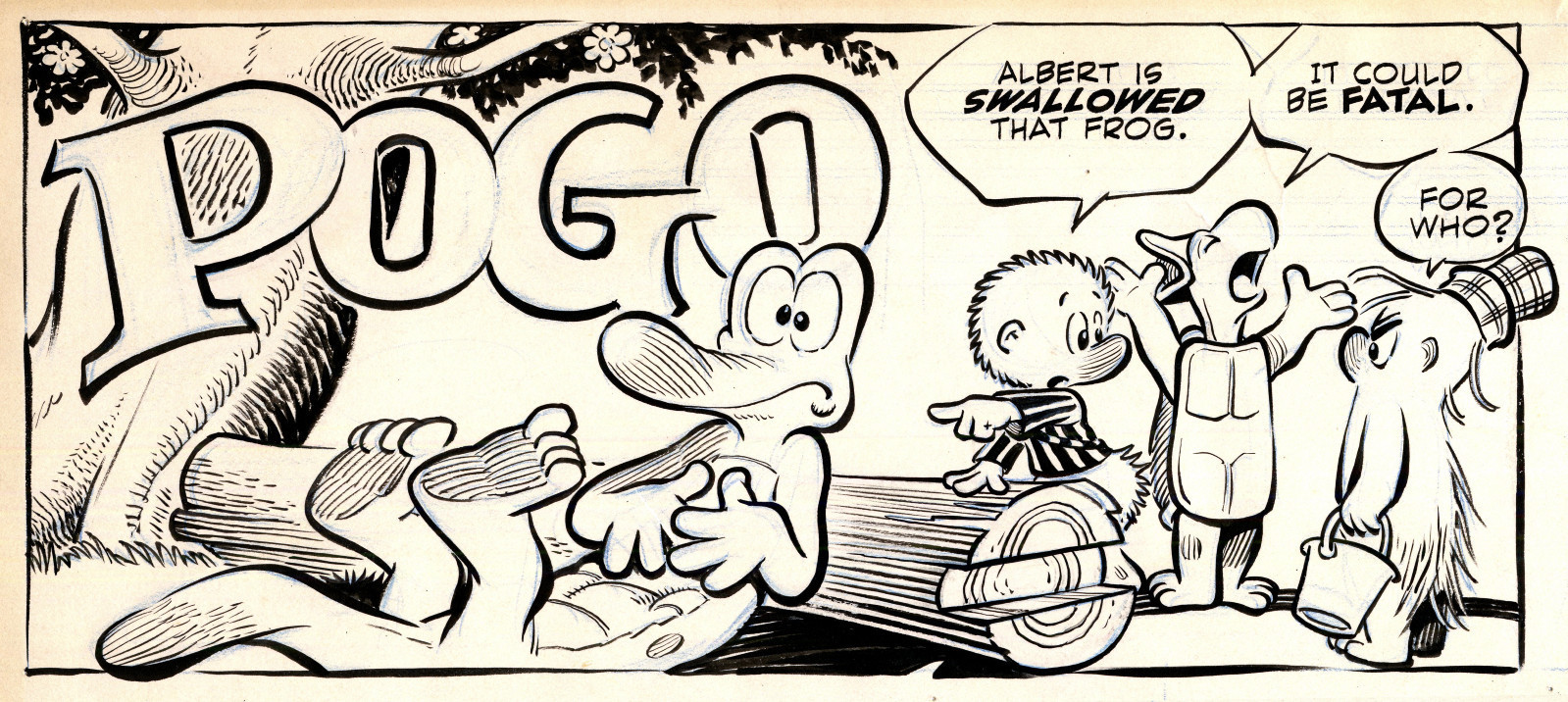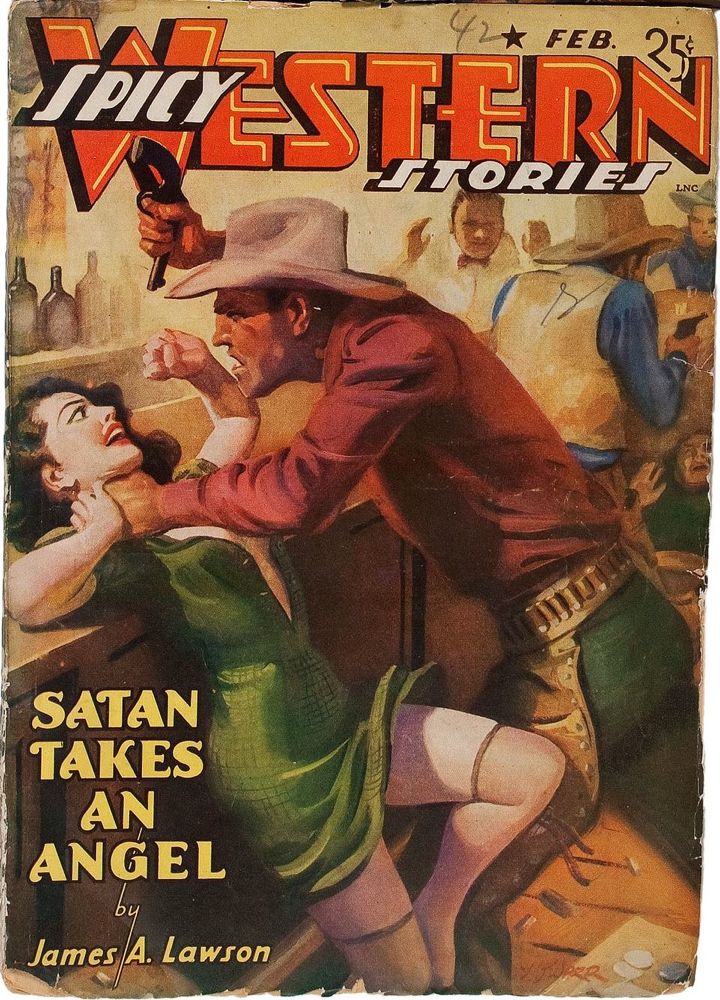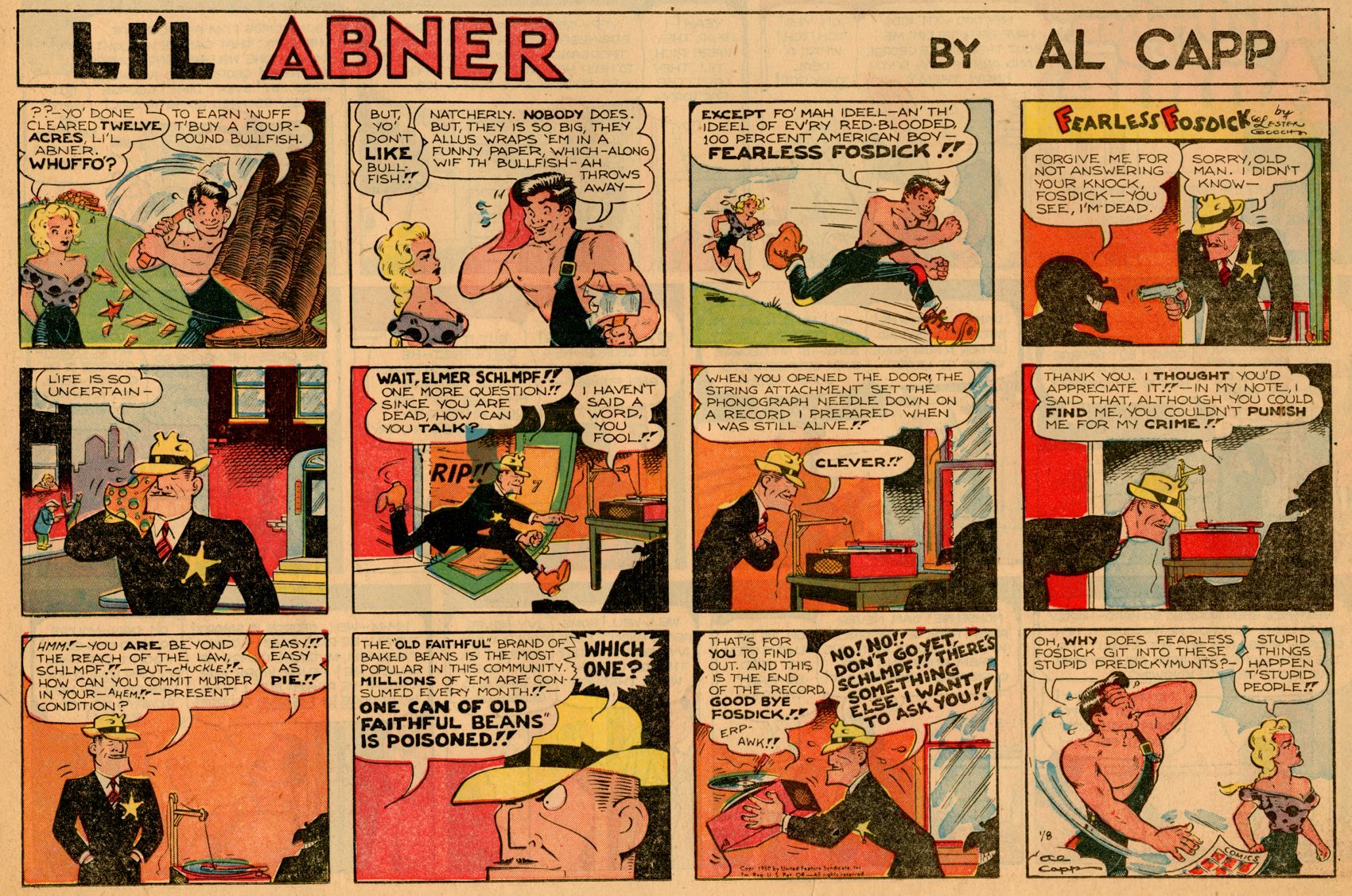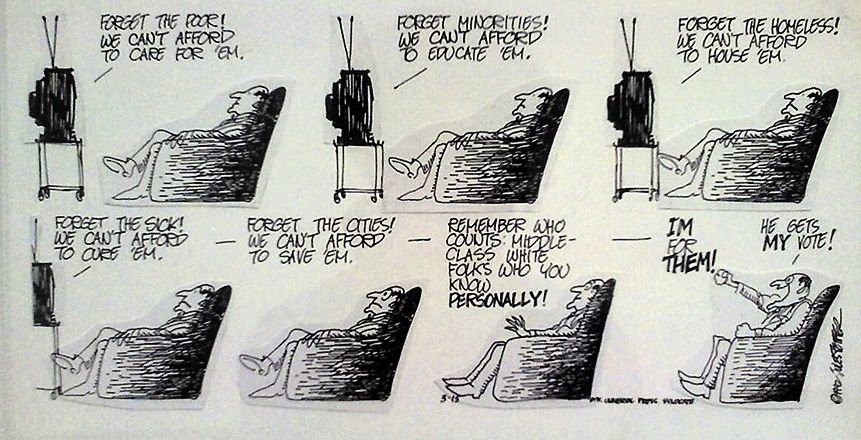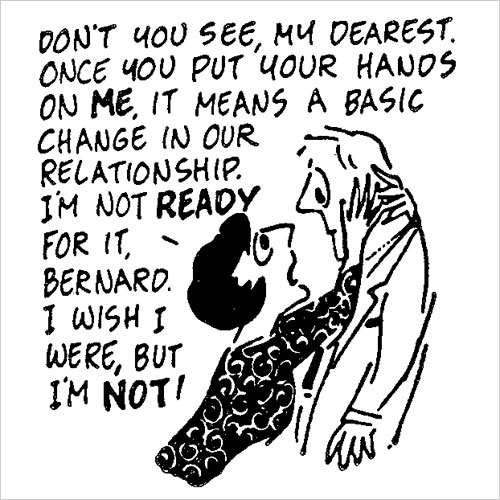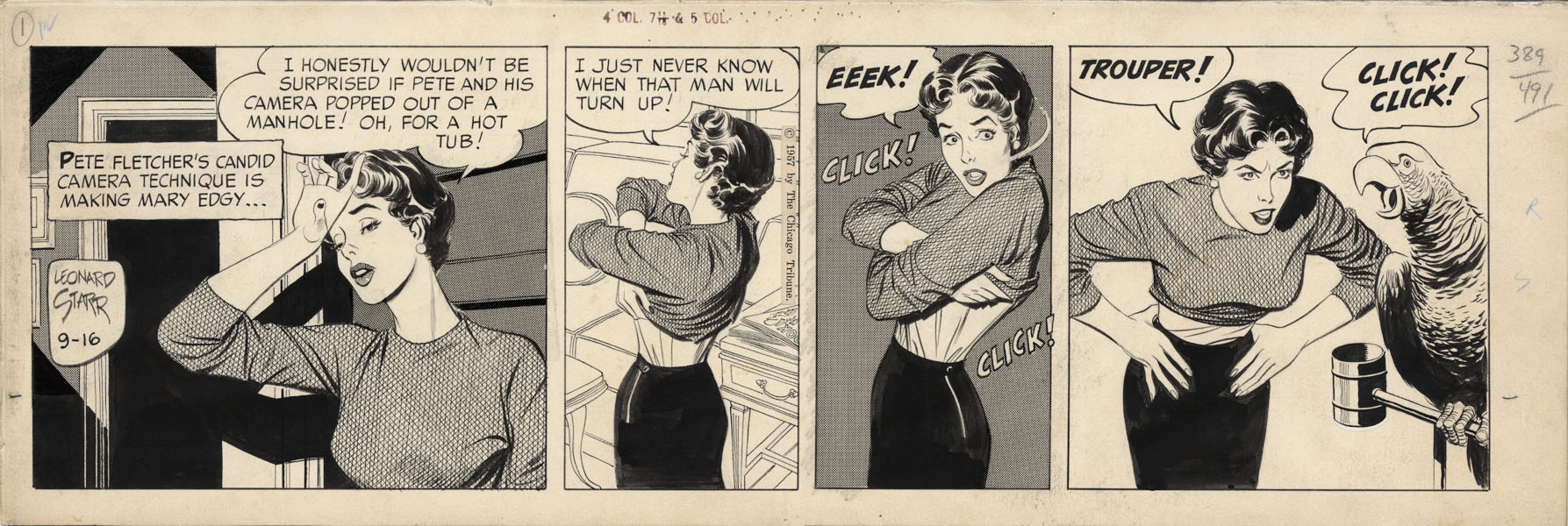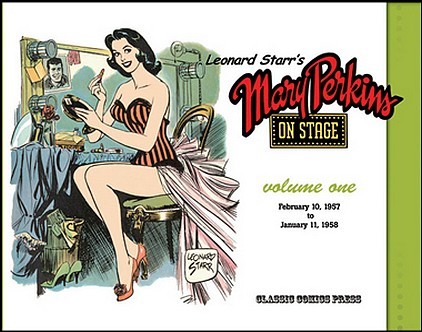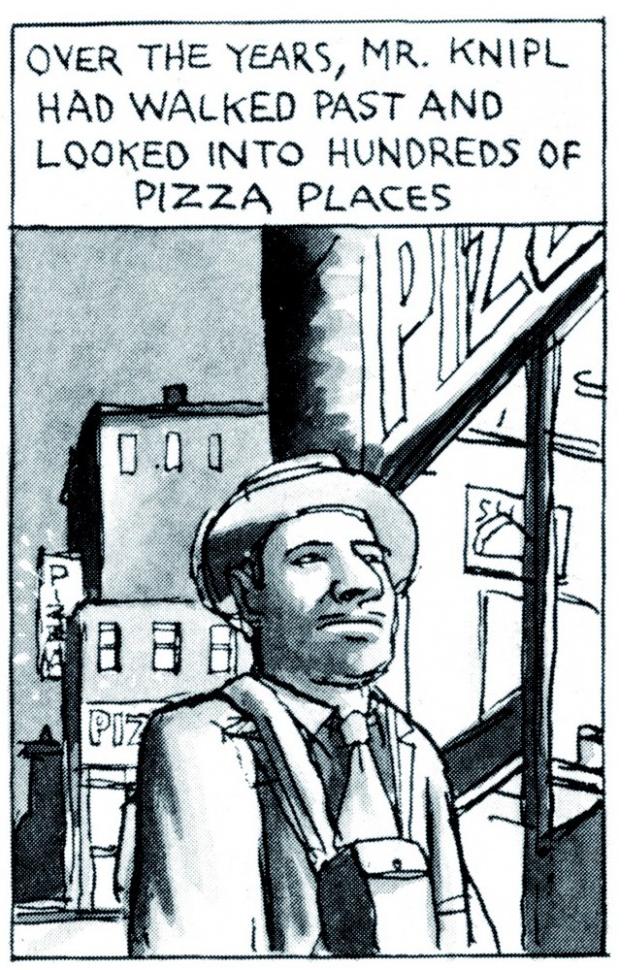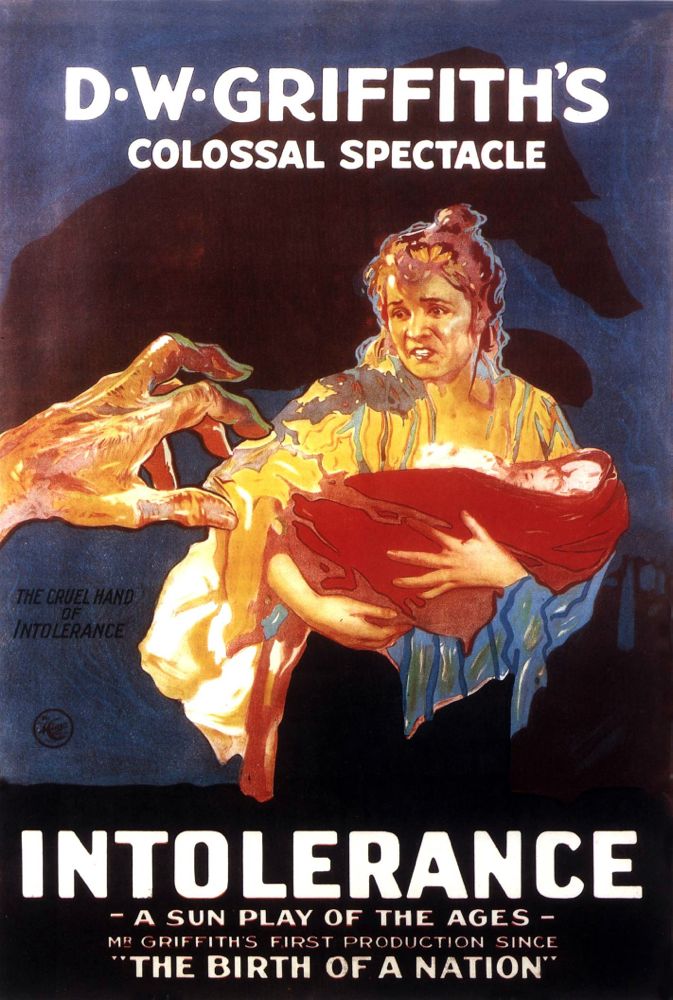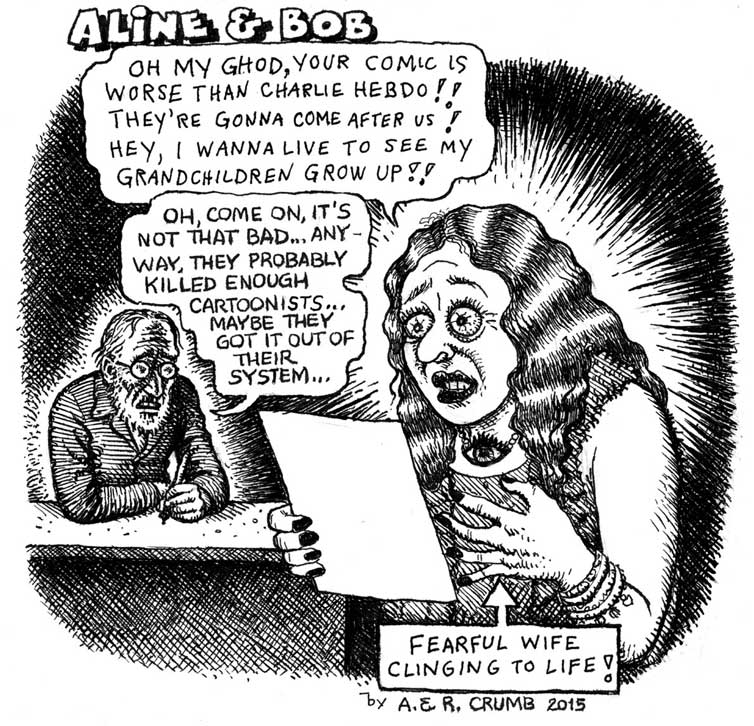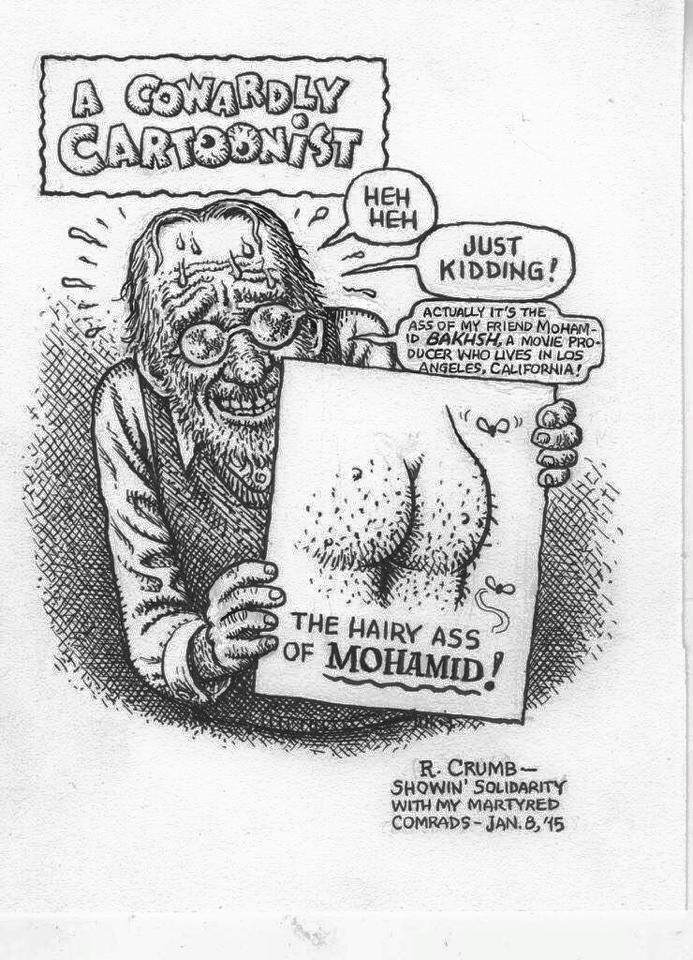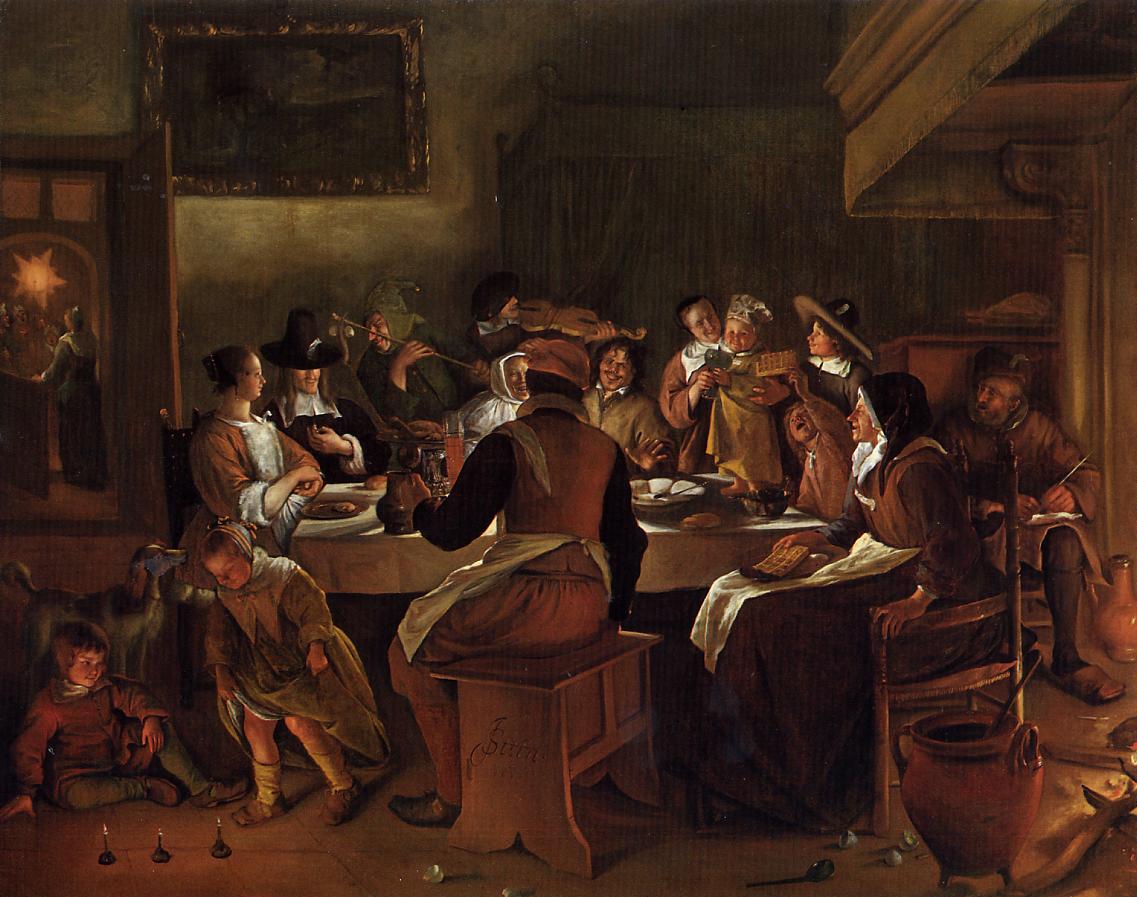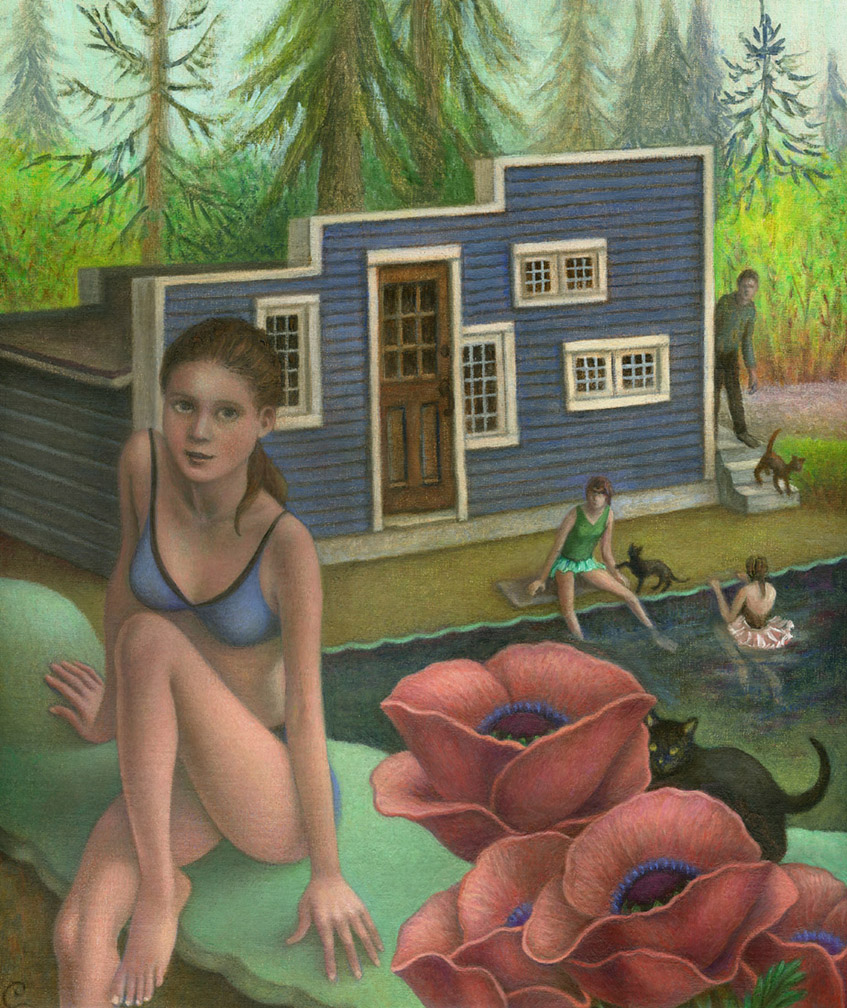Click on the image to enlarge.
Category Archives: Art
THE FUNNY PAPERS: PRINCE VALIANT
Prince Valiant is the most beautifully drawn of all the classic action-adventure comic strips. Its author Hal Foster was a brilliant draftsman and just about every image he ever drew was arresting. He employed large panels that contained lots of detail, but they didn’t work together in a dynamic way, like the shots in a movie, giving the narrative visual momentum.
The strip thus has a kind of static, or perhaps you could say stately, quality — more oriented towards the pictorialism of book illustrations than towards the cinematic energy of most action-adventure strips. Foster relied heavily on blocks of expository text to move his tales forward from one gorgeous image to the next.
Still, it’s a delightful and entertaining strip, aesthetically compelling, and the tales themselves are satisfying yarns, full of chivalric derring-do and spectacular fantasy.
Click on the images to enlarge.
THE FUNNY PAPERS: POGO
Complete runs of most of the great strips from the Golden Age of American comics have been or are being issued in excellent editions by the likes of Fantagraphics Books, IDW Publishing and Sunday Press Books. I’m a collector of many of these reprint series, working my way through them with great pleasure. Here’s a report on my progress through Pogo:
Click on the image to enlarge.
Like Charles Schulz’s Peanuts, Walt Kelly’s comic strip Pogo got off to a slow start. It creates a world located in the Okefenokee Swamp peopled by anthropomorphized swamp critters. The episodes involve a laconic backwoods sort of humor that isn’t always terribly funny or insightful. It’s just pleasant, in an off-hand way, though the drawing is consistently impressive. I never read the strip with much attention when it was first appearing but I’m told it moved eventually into a mode of social and political satire that was penetrating.
We shall see.
A PULP WESTERN COVER FOR TODAY
THE FUNNY PAPERS: LI’L ABNER
For my money, Li’l Abner is the funniest of all the classic American comic strips. (A couple of the episodes featuring Fearless Fosdick, a merciless parody of Dick Tracy, are the only comic strips this side of Mad Magazine that have ever made me laugh out loud.)
Al Capp, Abner’s creator, had a lively sense of the absurd, which he combined with a relentless cynicism to fashion a comic tone all his own, somewhere between slapstick farce and satire. The hillbilly inhabitants of Dogpatch, Abner’s home town, are both wise in their ways and idiotic — Capp ridicules them even as he uses them to ridicule the more sophisticated characters they meet.
Nothing is sacred in Capp’s view of things, everyone is preposterous. It’s an attitude that keeps the reader off balance, ready to be elbowed unexpectedly in the ribs by some outrageous gag or other. Comedy and sentiment rarely mix well — Capp’s total avoidance of sentiment frees him up for creating laughs at will.
There are echoes in this approach of the tone of E. C. Segar’s Popeye strips, with their manic knockabout gags and omnidirectional violence, but Popeye always remains heroic in his bullheaded way. Abner is always a boob, even when he’s doing the right thing, usually by mistake.
Capp’s strip is one of the few great ones that hit the ground running. Abner, Daisy Mae, Mammy and Pappy Yokum appear fully fledged from the start, ready to carry the strip onwards for decades.
Click on the images to enlarge.
THE FUNNY PAPERS: SICK, SICK, SICK
Between 1956 and 1966, Jules Feiffer drew a satirical comic strip (initially called Sick, Sick, Sick) for The Village Voice. All the strips have been reprinted in a volume titled The Explainers, which I’m working my way through. I read a lot of them originally in the 60s, when they started to be collected in paperback editions.
Reading them today, I’m struck by how relevant they remain. The specific cultural references have dated, but the issues — unpopular wars, political hypocrisy, insufferable hipsterism, manic consumerism and discombobulated gender relations — are depressingly au courant.
They chart the Age Of Anxiety as it transformed into the Age Of Hysteria, neither all that different from the current Age Of Hysterical Anxiety. Their wit seems as sharp as ever — not always the case with satire as it ages — and their insights as acute.
Click on the images to enlarge.
THE FUNNY PAPERS: MARY PERKINS ON STAGE
Click on the image to enlarge.
This is one the best of the soap opera comic strips — aimed primarily at women, they generally offered romantic or domestic melodramas with female protagonists. Their visual style tended to be realistic, with superb draftsmanship and dynamic angles within the panels punching up the drama of the narratives.
Leonard Starr was a master of the form. His Mary Perkins On Stage follows the life and loves of a young woman who arrives in New York hoping for a career in the theater. Her professional struggles and romantic entanglements hurtle along at a dizzying pace, with spectacular emotional tensions and climaxes in almost every strip.
The melodramatic twists and turns may be conventional, but Starr’s skills as an artist and visual storyteller keep them entertaining and addictive.
THE FUNNY PAPERS: THE BEAUTY SUPPLY DISTRICT
Ben Katchor is one of the truly great modern comic strip artists. He has a quirky drawing style, influenced a bit by the work of Ben Shahn, and quirky obsessions. Julius Knipl, Real Estate Photographer is a Katchor strip that appears in The Forward and other publications. Some of the strips are collected in The Beauty Supply District, a book I’m reading now.
They’re set in an imaginary New York that resembles sections of the real New York as it once was, vestiges of which remain — clusters of small-time manufacturers, retailers and wholesalers of modest industrial products and novelties.
When I first moved to New York in the 1970s I lived on a street in Chelsea which housed many such establishments — a maker of flags, a maker of coat-hangers, a maker of trophies. They’re all gone from my old neighborhood now, but they live on in Katchor’s strips, along with the eccentric salesmen who used to hawk such goods, the local cafes and delis that served the owners and employees of such firms.
They become in Katchor’s strips a kind of self-enclosed universe of desperate hustle and baffled ambition and weary resignation. It’s a universe that seems to know it’s doomed but carries on regardless. Today’s New Yorkers are dining in upscale restaurants that once housed cheap novelty display rooms, living in wildly expensive lofts where flags were once sewn. Katchor’s world is populated by the characters whose ghosts must still haunt such places.
A SILENT MOVIE POSTER FOR TODAY
THE FUNNY PAPERS: PEANUTS
Complete runs of most of the great strips from the Golden Age of American comics have been or are being issued in excellent editions by the likes of Fantagraphics Books, IDW Publishing and Sunday Press Books. I’m a collector of many of these reprint series, working my way through them with great pleasure. Here’s a report on my progress through The Complete Peanuts:
I’m in early stages with this strip, in the middle of 1953. The tone of the strip at this point, wry and genial, is still a bit bland. The center of the strip, Charlie Brown, has taken full shape as the good-natured but anxiety-ridden everyman he will remain, but the characters around him have yet to coalesce into iconic figures, though Snoopy is closing in on iconic status.
Charles Schulz, Brown’s creator, still seems to see the strip as a series of observations on childhood, not on Life Itself — in short, the universe of the strip has not yet become mythic. But it’s getting there.
Click on the image to enlarge.
THE NEW YORK TIMES
. . . won’t be showing you this image, the cover of the first post-massacre edition of Charlie Hebdo. Keep in mind that The New York Times also failed to expose the WMD fantasy that the U. S. used to justify the war in Iraq, or the Wall Street corruption that led to the crash of the world economy in 2008.
Isn’t it time for The New York Times to just go away? The moral and professional collapse of the Times is more disturbing to me than Islamist assaults on the free press.
As R. Crumb recently put it, “You don’t have journalists over there [in America] anymore, what they have is public relations people. That’s what they have over in America now. Two-hundred and fifty thousand people in public relations. And a dwindling number of actual reporters and journalists.”
That’s the great irony of the Islamist assault on the free press in the West — it’s attacking a hollow puppet of the plutocracy.
R. CRUMB
. . . who lives in France, is putting his life on the line publishing cartoons like this.
But, hey — we in the West are hypocrites, with plenty of innocent Muslim blood on our hands. Who are we to condemn radical Islam for placing a great artist like Crumb in that kind of jeopardy?
Click on the image to enlarge.
R. CRUMB WEIGHS IN
IT’S EPIPHANY NOW
In some traditions, Twelfth Night, the evening of the twelfth day of Christmas, is celebrated on 6 January rather than on 5 January. This makes no sense to me. 6 January is the Feast Of the Epiphany, when Christmastide gives way to Epiphanytide. Why would you celebrate the last day of Christmas on the first day of Epiphany?
Celebrating on the 6th also requires counting the day after Christmas as the first day of Christmas. Christmas is not the first day of Christmas? No, no — it cannot stand.
What’s been lost in all traditions is the custom of having a wild party on Twelfth Night. The holidays are considered over then in our time, people have gone back to work. But the holidays are not over, and people should not be back at work. They should be having wild parties, like the one depicted above by Jan Steen in 1662.
Click on the image to enlarge.
AN AMY CREHORE FOR TODAY
Bathers’ Club — brand new. See it and other work on her web site here:
Click on the image to enlarge.

